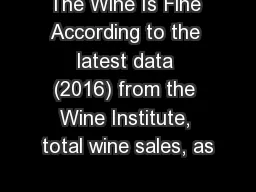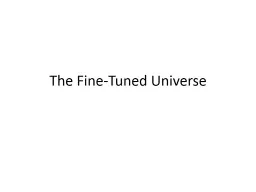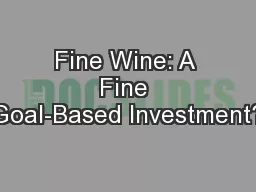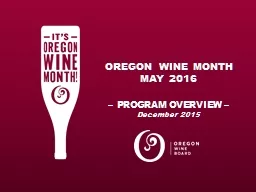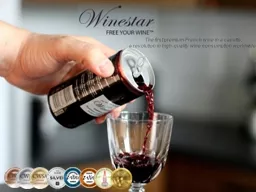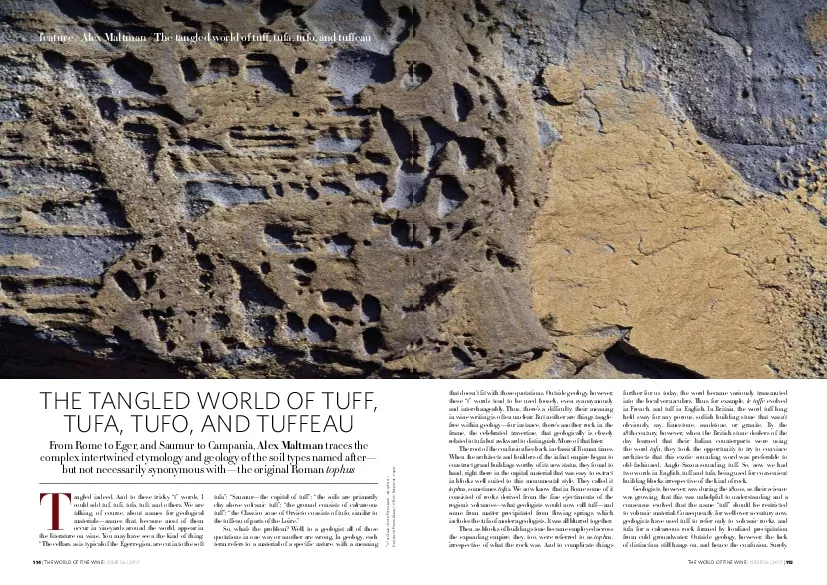PPT-The Wine Is Fine According to the latest data (2016) from the Wine Institute, total wine
Author : conchita-marotz | Published Date : 2019-01-26
California wine shipments increased 465 in retail value or a total of 341 billion with case shipments to all markets US and international increasing 11 and to the
Presentation Embed Code
Download Presentation
Download Presentation The PPT/PDF document "The Wine Is Fine According to the latest..." is the property of its rightful owner. Permission is granted to download and print the materials on this website for personal, non-commercial use only, and to display it on your personal computer provided you do not modify the materials and that you retain all copyright notices contained in the materials. By downloading content from our website, you accept the terms of this agreement.
The Wine Is Fine According to the latest data (2016) from the Wine Institute, total wine: Transcript
Download Rules Of Document
"The Wine Is Fine According to the latest data (2016) from the Wine Institute, total wine"The content belongs to its owner. You may download and print it for personal use, without modification, and keep all copyright notices. By downloading, you agree to these terms.
Related Documents

